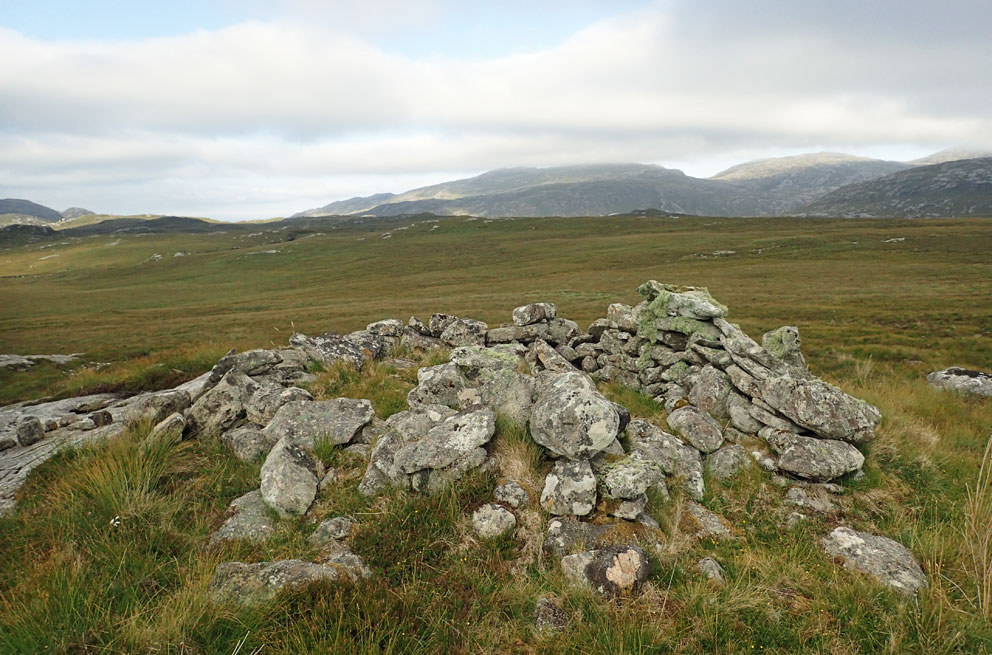Sometimes you stumble upon something special, something you've never heard of. This happened to me in the August of 2017, when I was driving to the road end in Mealasta, on the southwest coast of Lewis. As I neared the end of the road my attention was drawn to the amazing view south to Mealasta Island and Scarp. But even so, I did notice something unusual set between the road and the sea. It looked like a stone circle.
I parked the car, then made my way down the hillside to see what it was. It turned out to be a very unique view-indicator. The circle was comprised of eleven boulders, each with an embedded metal plaque that listed the place the boulder pointed to, and the distance to it. There are four island-stones, the south-most pointing the way to Scarp, just 5 miles to away. So close - yet so hard to get to.
 |
| The Scarp Stone |
The four other island-stones point the way to Geisgeir, the Monachs, St Kilda, and the Flannans.
There are also three hill-stones that point to the nearby summits of Mealasbhal, Griomabhal, and Tamanasbhal. The final three stones point to some very far-off places: Nova Scotia, New Zealand, and the North Pole. If you ever make the drive to road's end at Mealasta, be sure to pay a visit to this impressive view indicator. It is a great place to go and dream of visiting the special places marked by the stones. I have been to about half of them, and someday I hope to get to the others - well, maybe not the North Pole.
 |
| New Zealand - 11,288 miles |













